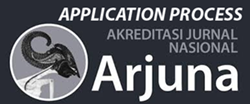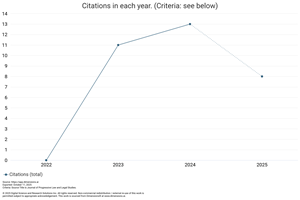Animal Abuse in the View of Islamic Criminal Law
DOI:
https://doi.org/10.59653/jplls.v1i01.9Keywords:
Jinayah Jurisprudence, Criminal Law, Animal AbuseAbstract
Islam as the majority religion in Indonesia teaches us to be a mercy to the universe, including taking care of animals on earth. However, Indonesia is the country with the largest number of downloaders of animal abuse content in the world. Therefore, the purpose of this study is to analyze these problems from the perspective of jurisprudence. The research method used is normative legal research with a statutory approach and analysis of Islamic legal theories. The results of this study indicate that the crime of mistreatment of animals in Indonesia is regulated in the Criminal Code (KUHP) Article 302 and Article 540, as well as Law Number 18 of 2009 as amended by Law Number 41 of 2014 concerning Animal Husbandry and Health. Animal abuse in jinayah fiqh is included in the ta'zir finger, in which the level and punishment are determined by the government ( ulil amri ).
Downloads
References
Afzal, M., & Khubaib, M. (2021). Flexibility in the implementation of islamic criminal law in modern islamic society in the light of qur’ān and Sunnah. Journal of Islamic Thought and Civilization, 11(1). https://doi.org/10.32350/JITC.111.21
Bartelink, E. J., Clinkinbeard, S., Spessard, C., Kilmartin, A., & Spangler, W. L. (2022). Documenting non-accidental injury patterns in a dog abuse investigation: A collaborative approach between forensic anthropology and veterinary pathology. Journal of Forensic Sciences, 67(2). https://doi.org/10.1111/1556-4029.14948
Bègue, L. (2022). Explaining Animal Abuse Among Adolescents: The Role of Speciesism. Journal of Interpersonal Violence, 37(7–8). https://doi.org/10.1177/0886260520959643
bin Muhamad, M. M., Shariff, A. A. M., Rajamanickam, R., Rahman, M. A., Zahid, A., & Ismail, N. (2015). Qarinah: Admissibility of circumstantial evidence in hudud and qisas cases. Mediterranean Journal of Social Sciences, 6(2). https://doi.org/10.5901/mjss.2015.v6n2p141
BIP, T. (2021). 3 Kitab Undang-Undang Hukum, KUHPer, KUHP, KUHAP. Grahamedia Press.
Campbell, A. M. (2022). The Intertwined Well-Being of Children and Non-Human Animals: An Analysis of Animal Control Reports Involving Children. Social Sciences, 11(2). https://doi.org/10.3390/socsci11020046
Cârciumaru, E., Popa, I. A., & Ciobotaru-Pîrvu, E. (2022). Bite Wounds and Animal Abuse: Review of 24 Cases. Journal of Comparative Pathology, 191. https://doi.org/10.1016/j.jcpa.2021.11.030
Chandra, W. D., & Astuti, P. (2018a). PENEGAKAN HUKUM PASAL 302 KUHP TENTANG PENGANIAYAAN TERHADAP HEWAN DI KOTA SURAKARTA. NOVUM: JURNAL HUKUM.
Chandra, W. D., & Astuti, P. (2018b). Penegakan Hukum Pasal 302 KUHP tentang Penganiayaan Terhadap Hewan di Surakarta. Novum: Jurnal Hukum, 5(4), 1–8.
Da Silva Brandão, T., Dantas Neto, A. M., De Sousa Alves, A., Ximenes, R. G., Bezerra, K. P. G., De Lima Brasil, A. W., Da Nóbrega, S. C. A., Da Silva, R. M. N., & De Souza, A. P. (2022). Animal abuse and interpersonal violence from the perspective of veterinarians from Paraíba State, Brazil. Semina:Ciencias Agrarias, 43(3). https://doi.org/10.5433/1679-0359.2022v43n3p1269
Fitzgerald, A. J., Barrett, B. J., Gray, A., & Cheung, C. H. (2022). The Connection Between Animal Abuse, Emotional Abuse, and Financial Abuse in Intimate Relationships: Evidence From a Nationally Representative Sample of the General Public. Journal of Interpersonal Violence, 37(5–6). https://doi.org/10.1177/0886260520939197
Hasan, M. R., & Azman, N. N. A. N. (2022). Baby Dumping in Malaysia and Indonesia: Between National Regulation and Islamic Criminal Law. Mazahib, 20(2). https://doi.org/10.21093/mj.v20i2.3361
Ireland, J. L., Birch, P., Lewis, M., Mian, U., & Ireland, C. A. (2022). Animal Abuse Proclivity Among Women: Exploring Callousness, Sadism, and Psychopathy Traits. Anthrozoos, 35(1). https://doi.org/10.1080/08927936.2021.1944560
Ismail, W. N. H. W., Nordin, L., Salleh, F. I. M., Benedict, W., Hanafi, M. A., Taib, M. H. M., & Ren, R. G. (2020). Hudud: The right of allah swt in perspective of punishment for adultery. Journal of Critical Reviews, 7(8). https://doi.org/10.31838/jcr.07.08.169
Muri, K., Augusti, E. M., Bjørnholt, M., & Hafstad, G. S. (2022). Childhood Experiences of Companion Animal Abuse and its Co-Occurrence with Domestic Abuse: Evidence from a National Youth Survey in Norway. Journal of Interpersonal Violence, 37(23–24). https://doi.org/10.1177/08862605211072176
Rahman, M. M., Yunus, K., & Alenezi, R. (2018). Ethical Considerations in Exploiting, Culturing and Killing Fish towards Animal Rights in Islam. International Medical Journal Malaysia, 17. https://doi.org/10.31436/IMJM.V17I2.949
Riggs, D. W., Baum, N. G., Taylor, N., & Beall, J. (2022). Reports of Animal Abuse in Child Protection Referrals: A Study of Cases from One South Australian Service. Child Abuse Review, 31(1). https://doi.org/10.1002/car.2720
Sujono, I., Mangesti, Y. A., & Suhartono, S. (2022). THE SELLER’S LIABILITY DUE HIDDEN DEFECTIVE PRODUCTS IN THE ONLINE SELLING AND BUYING TRANSACTION BASE ON UUPK. International Journal of Law Reconstruction, 6(2), 257–277.
Wolf, L. R., Galdioli, L., Brugnerotto, M., Ramos, M. G., & Garcia, R. de C. M. (2022). Analysis of reported animal abuse in Campo Magro, Paraná, Brazil. Brazilian Journal of Veterinary Research and Animal Science, 59. https://doi.org/10.11606/issn.1678-4456.bjvras.2022.183392
Yani, A., Suryadi, R. A., & Nurrohman, N. (2020). STUNNING ON ANIMALS SLAUGHTER ON ISLAMIC LAW PERSPECTIVE. Jurnal Ilmiah Al-Syir’ah, 18(1). https://doi.org/10.30984/jis.v18i1.1103
Yusuf, M. (2021). QANUN HUKUM JINAYAH DALAM BINGKAI TEORI PEMBUATAN HUKUM. LEGITIMASI: Jurnal Hukum Pidana Dan Politik Hukum, 10(2). https://doi.org/10.22373/legitimasi.v10i2.11343
Downloads
Published
How to Cite
Issue
Section
License
Copyright (c) 2023 Salman Farizi

This work is licensed under a Creative Commons Attribution-ShareAlike 4.0 International License.
Authors who publish with this journal agree to the following terms:
- Authors retain copyright and grant the journal right of first publication with the work simultaneously licensed under a Creative Commons Attribution-ShareAlike that allows others to share the work with an acknowledgement of the work's authorship and initial publication in this journal.
- Authors are able to enter into separate, additional contractual arrangements for the non-exclusive distribution of the journal's published version of the work (e.g., post it to an institutional repository or publish it in a book), with an acknowledgement of its initial publication in this journal.
- Authors are permitted and encouraged to post their work online (e.g., in institutional repositories or on their website) prior to and during the submission process, as it can lead to productive exchanges, as well as earlier and greater citation of published work (See The Effect of Open Access).
























